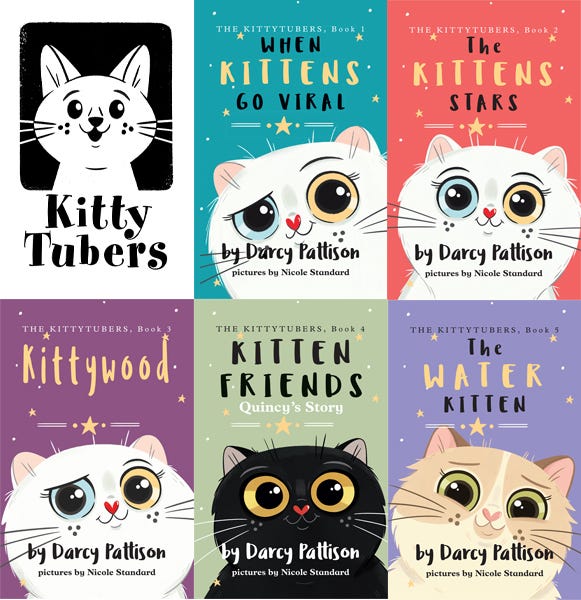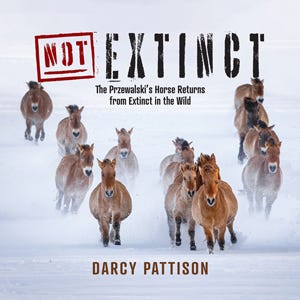10,000 Books Just Got Delivered! Now What?
Why a marketing plan is essential.
Wow! What an exciting day! You worked hard on your picture book and had it printed overseas. At the knock on your door, the shipper unloads boxes and boxes and boxes.
At last your hard work has paid off! Your books are here!
Now what?
It’s time to figure out how to sell those books.
❤️❤️❤️ Let me say this gently and with complete sympathy ❤️ ❤️❤️
You got the horse before the cart. Let me explain why, and then hang on, or skip to the end where I’ll give suggestions on how to move forward anyway to sell books as quickly as possible.
There are different business plans (and publishing a book, even just one book, is a small business). You chose to print first, sell later. When you offset print, you order books with optimism that you can reach the audience and sell books. That means you must know your audience, distribution methods, and have a marketing plan.
I choose to print-on-demand (POD), which means I sell first, print later. When there’s an order, THEN the book is printed and shipped. Don’t worry! I still need to know my audience, have distribution set up, and have a marketing plan.
The difference? I didn’t invest thousands of dollars in stock that is filling up my extra bedroom. POD allows me to be nimble because my investment dollars aren’t tied up in that stock. I can put out three or four more books while you try to sell copies on that one offset print books.
My business plan is to use POD printing because it allows me to produce more books, and optimize my budget.
I once talked to a Penguin editor who said they had 25 books on their current list. She was sure that some would break out and make huge sales. The problem? She didn’t know which ones. No one can accurately predict why some books sell and some don’t. Not even the big publisher editors! That means I write books that I’m passionate about, set them up for success, and then wait to see what happens. And I’m more likely to have success if I publish five books a year than just one.
Audience, Marketing Plan, and Distribution Come First
So, let’s put things in order. When you’re thinking about publishing a children’s book, you should first think about your audience and your marketing plan because this will determine where you distribute or sell those books. You should make strategic decisions before you ever hire an illustrator for that book. THIS comes first—not last.
Audience
Children’s books can have a variety of audiences, and each one needs a special approach to marketing. Did you write an educational book or a trade book? Trade books are meant for the bookstore market and should be a high concept story, which can be communicated in one or two sentences. For example, “When an inventor gives the cat world a human to cat and cat to human speech translators, the cats create Kittytube, so they can create and benefit from their own videos.” The Kittytubers series has an audience of over 100,000.
Educational books, on the other hand, would fit into the school curriculum someway. My new book, NOT Extinct fits the science curriculum with an emphasis on conservation.
Selling to teachers is different from selling to bookstores. Selling to parents is different from selling to museums. Who is your audience? It matters!
Distribution
People buy from familiar places. If you make a customer work hard to find your book, you won’t get sales.
For bookstore sales, that means your book must be available from Ingram Wholesale, at minimum, which is the largest wholesale book distributor in the US. Or, you may want a full-service distributor who will visit bookstores to hand-sell your book. Those are very different types of distribution methods!
Read this blog post for more information.
The Importance of Distribution: Self-Publishing Children's Books
Every year, I add new distributors and drop off those that perform poorly for my books. The key idea is that readers need to be able to find your books WHERE THEY WANT TO FIND YOUR BOOKS.
Other resources on distribution:
Tips for How Independent Publishers Can Land Traditional Distribution | IBPA Podcast
How Independent Publishers Can Land Distribution with Simon & Schuster | IBPA Podcast
Once you know your audience and distribution methods, you can create a reasonable marketing plan with prelaunch, launch and post-launch strategies.
THEN, you can scope out the difference between POD and offset printing. If you choose traditional distribution, you’ll likely need offset printing, but POD has its own distribution channels.
Printing Overseas v POD
Should you print your full color picture books overseas or print-on-demand (POD).
SELLING YOUR STOCK OF BOOKS
So, you got things out of order in publishing your children’s book. Sigh. You live and learn. But you still need to sell those books! With money tied up in inventory, you can’t publish another book until these sell. Here are some steps to take:
Focus on Metadata first. Metadata is data about your book and it’s crucial to your book’s success. If someone searches Google or on Amazon, your book must come up in the results or you won’t sell. Make sure it is optimized everywhere you can.
Understand Word of Mouth. Find ways to get people talking about your book and telling their friends about the book.
Study marketing. Read widely to see how others sell books similar to yours.
Work your local, state, and regional teacher and librarian organizations. For example, the International Literacy Association has many affiliate chapters. Find those in your area. Pitch a presentation at their annual conference, get a booth at their conference, and make friends with them! Find other appropriate organizations which will help target your marketing.
Since you offset printed, you didn’t go through KDP, Amazon’s print-on-demand service. To put your book for sale on Amazon, look for their vendor programs. I can’t give you specifics since I haven’t used them, but this is your access to Amazon.
Consider a booth at craft shows, conventions, etc. where book lovers gather.
Sell to schools with author visits. Students at schools are a captive audience! How can you reach them and sell your book?
Direct sales platform such as Shopify. If you know your audience and where to find them, create an online store to sell to them. This will require advertising or a deep involvement in a community.
Grassroots marketing If your story is a niche market, you must connect with people in that community. For example, if you wrote a middle grade novel about a girl who loves horses, that’s a niche market. You can find places where people show horses and sell from a booth at those rodeos, conferences, horse shows, etc.
All your efforts should help you find your audience and put your books in their hands. You’ll need a marketing plan that targets them and a distribution model that efficiently makes it easy for them to order/buy your books.
Meanwhile, write the next book. And plan ahead how you’ll market and reach your audience!






Terrific advice, as always. And the most important thing is you are writing what you are passionate about. Kudos to you!
A comprehensive “how to.”